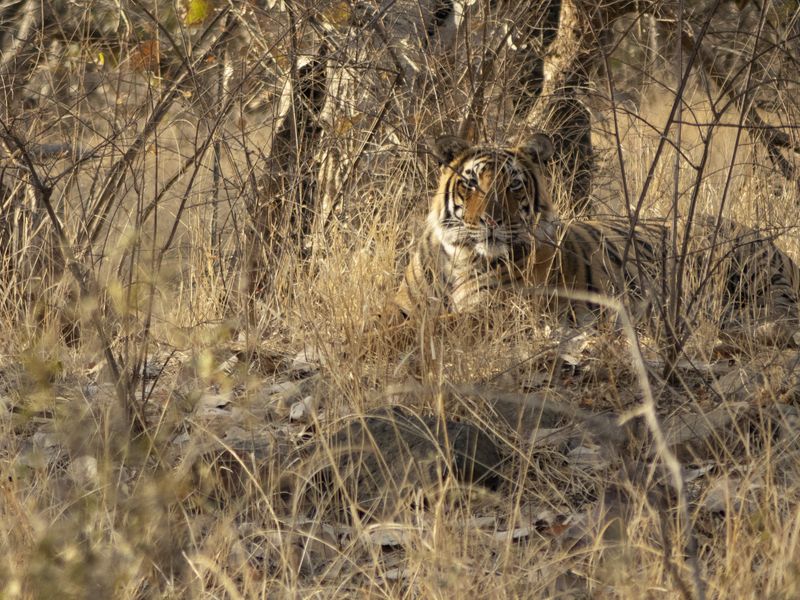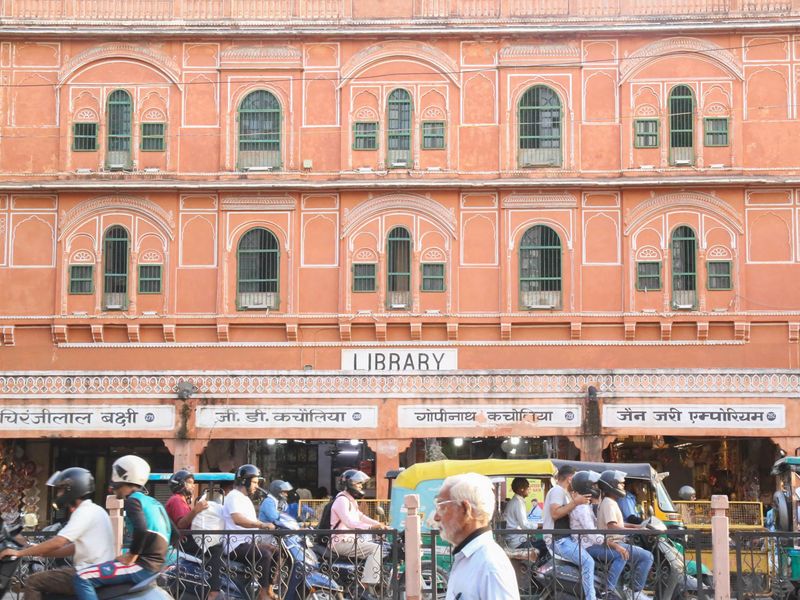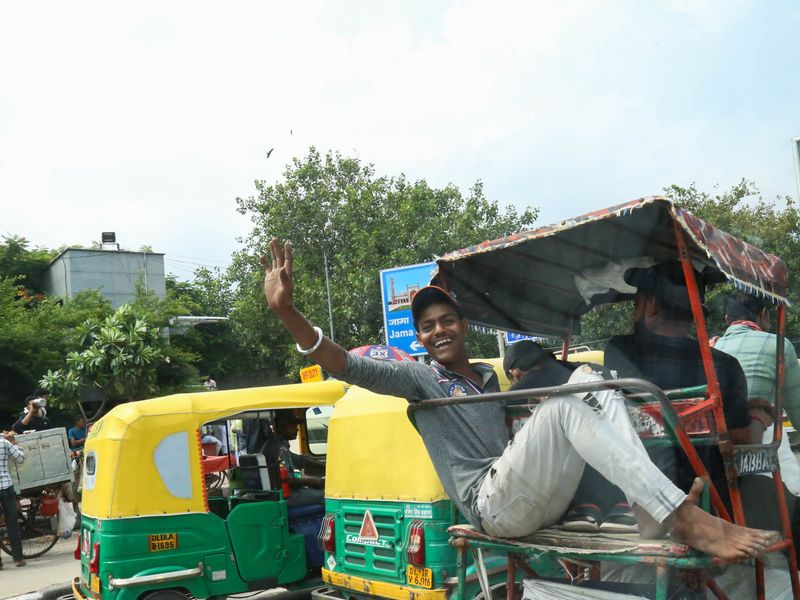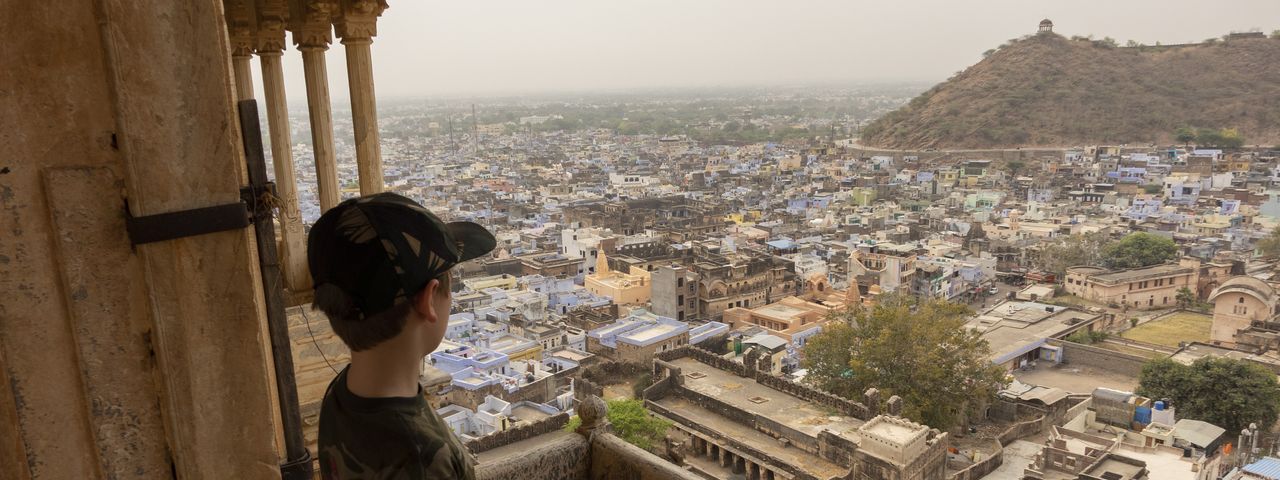Many well-loved children’s stories are full of Indian imagery, conjuring up jungles, elephants, spice trails and palaces that fire our imaginations from a young age. Family holidays to India are just as unforgettably vivid - brimming with history, wildlife and kaleidoscopic colour.
Follow in the footprints of tigers in Madhya Pradesh, and lose yourselves in Rajasthan’s fortified cities. Explore Kerala’s enigmatic backwaters, discover mouth-tingling new flavours in Old Delhi, and rumble through India’s rolling landscapes by train...
Each individually tailored family trip navigates you through the sensory overload to the heart of India’s compelling culture, giving this phenomenal country a family focus, and letting each region speak for itself.
India weather & when to go
Pick a month below
Kashmir & Himalayas
Rajasthan & the Golden Triangle
The South
Anna - India specialistFrom following the trail of majestic Bengal tigers in Ranthambore to seeing city streets sparkle with a thousand lights during Diwali season, India is always astounding.
India with kids: what to expect?
No two family holidays to India are ever the same; it’s a vast country that gets under your skin, drawing you back time and again to see more.
Wildlife wonder
If wildlife watching is top of your family’s list, head to Madhya Pradesh, which leaps straight from the pages of that jungle story. Sloth bears stumble through dense vegetation peppered with ruined temples while, on rare occasions, tigers can sometimes be spotted prowling through Bandhavgarh or Kanha. Chambal National park is a haven for birdlife, a world away from the tourist trail, where you can listen to tales of pirates and crocodile encounters as you boat out on new adventures. Make young wildlife enthusiasts’ eyes widen at the sight of panthers, birds and, of course, tigers on safari in the easily-accessible Ranthambore National Park.

Legendary landmarks
From the eye-widening wonders of the Taj Mahal to the moving spirituality of Varanasi, Uttar Pradesh offers families a glimpse into the India of legend. In the northern state of Rajasthan, you can imagine yourselves in the historic courts of India’s aristocracy as you wander through its magnificent palaces. See the towering architecture and rooftop bazaars of Jaipur’s elegant Pink City, journey out to see rhesus macaque monkeys at the Galtaji temples, and explore the intriguing Amber Fort. Marvel at the ramshackle rooftops of Jodhpur’s Blue City with the magnificent Mehrangarh Fort rising above them, and become enchanted by the twinkling reflections in Udaipur, the ‘City of Lakes’.

City sights
Delhi is most people’s entry point to India, and is just as much of a cacophony of sights, sounds, smells and wonderful chaos as you’d expect. In this city of two halves, the spacious modernity of New Delhi, with its fair selection of swish hotels, gives way to the winding, narrow streets of Old Delhi, filled with endless bustle, street food delights and local flavour. Needless to say, it can be overwhelming, so it’s essential to find your family’s pace and adjust accordingly. Take a calm wander through New Delhi’s deer park, make time to marvel at the modern splendour of the Akshardham Temple, or even visit some of the city’s enriching exhibitions, including the rather eccentric toilet museum!

Beach life & backwaters
Goa’s blissful beaches are still a natural place to head if you’re craving some relaxed hippy vibes. Explore inland waterfalls, go wild with watersports, and discover modern graphic art culture at a museum dedicated to Goa’s renowned cartoonist, Mario de Miranda. However, the last word for the coast in a family holiday to India goes to Kerala. This sultry southern state, where spices seem to infuse every breath, offers a different perspective. Sail through the atmospheric ‘backwaters’, relax on coconut palm-bordered sands, and settle down in a welcoming waterside homestay to feast on fresh fusion cuisine as fireflies dot the star-filled southern skies.

Our India Specialists’ top tips for families
India is, obviously, huge, and it’s not a country you can see all of in a couple of weeks! When travelling as a family, time is precious, and keeping transfers to a minimum is often a top priority. We often recommend that families focus their visit on Rajasthan, especially if they’ve not been to India before, as it ticks loads of boxes for family-friendly hotels and activities, great wildlife watching, interesting history and culture, and relatively short transfer times between centres. Goa is another popular spot for families, especially those craving that dedicated beach r&r, and is great both as a main destination or added onto an itinerary based elsewhere in India for some relaxing days of sun and sand.
As a result of India being so vast, when it's tipping with rain in one area, there's often bright sunshine in another. Generally, the best time to visit India is December through to March during the cool, dry season, when most of the country basks in bright, warm sunshine and rain is almost non-existent. Do keep in mind, however, that India is a large country with a diverse climate and varied weather conditions which can be changeable. The monsoon drops rain on large parts of the country from mid-June to early September making central and north east India in particular very hard going, with flooding a real risk. The shoulder season months of October, November and April either side are a good second bet for large parts of the country. Though there’s more risk of the odd shower, and both temperatures and humidity are usually higher, you'll often find far fewer tourists and lower prices for accommodation to balance that out.
Having experienced, knowledgeable and welcoming local guides on hand during your trip is absolutely invaluable. They’ll be able to meet you upon arrival, liaise with your local drivers, act as translator, and generally make everything go as smoothly as possible. In India, you’ll usually have a different local guide in each place you visit, with detailed knowledge and experience to give you the best experience of that area. They can leave you to your own devices as much or as little as you wish, but we think a good guide is essential for a successful family holiday. We pride ourselves on using only the best guides in a given region. All our guides are trained to the highest level, and fully certified and licensed. The feedback we get from our clients is that the guides make a great trip into an outstanding one.
India is a dream destination on many families’ wish lists, and, though family travel there does take careful consideration, it has so much to offer. Over recent years, India has become more accessible to families, and there are now many more areas of this vast country open to travelling with kids. Several of our Destination Specialists have travelled in India, and found it welcoming, supportive and reassuring. Its size and scale, especially in the big cities, can feel overwhelming to anyone, kids in particular, so the advice is always to take things at a gentle pace. It’s still a developing destination in places, so some aspects of life will be different to what you’re used to, but the infrastructure in a lot of accessible destinations now has tourism as a major influence, making things ever smoother. If at any time you’re unsure of anything, our fantastic guides and specialists are always on hand to help.
When planning a trip to Asia, it’s important to consider the possible requirements for vaccinations and immunisations. Most importantly, we stress that you should contact your doctor or medical practitioner well before you depart to get their advice on any vaccinations you may need for your trip. If you’ve travelled recently and believe that you are already up-to-date, it’s still worth checking as vaccinations have a varying life span. It’s always worth checking out the NHS Travel Vaccinations site for extra health travel information.
All foreign nationals visiting India require a visa, with the exception of Nepalese, Bhutanese and Maldives passport holders, and this must be arranged in advance of travel. Your passport must be valid for a minimum of six months from your arrival date into India, and must have at least two blank pages. In 2014, the Government of India launched an e-Tourist Visa, which can be used by nationals of 113 countries to enter India at 26 airports. There are three durations available: 30 days, 1 year or 5 years. The e-Tourist visa is valid from the date of issue. The 30-day visa is issued for a double entry; the long term visas are valid for multiple entries. Visit the following website and complete the online form for an e-visa. Give yourself plenty of time as it’s a lengthy form! It’s important that you apply at least 4 days in advance of your arrival date, giving enough time for visa processing. Confirmation of your e-Tourist Visa will be emailed to you. You will need to print off this confirmation and produce it on arrival into India.
Light, long sleeved shirts, a light scarf or two, and long trousers or skirts will mean that you’re prepared for any eventuality, including modest dress codes at sites of religious significance. They’ll also help provide valuable protection against strong sunlight and mosquitoes. We’d recommend bringing your own supplies of any essentials, such as nappies, formula etc.,as well as your preferred brand of sunscreen and a good insect repellent, as it might be tricky to get hold of certain things. If you’re travelling with tinies, consider taking a really good baby carrier, as push-chairs might be a pain to get around with.
You can’t obtain Indian Rupees outside of India. You can change money on arrival at the airport, in larger hotels and major banks. Banks and ATM’s are widely available in all cities, towns and tourist areas. India is still very much a cash society, so we would recommend always carrying some cash with you, especially lower denominations. One tip: don’t accept damaged bank notes as you’ll have issues trying to pass them on. Credit cards are not widely accepted. You will be able to pay with plastic only in major hotels, high-end restaurants and some shops. Visa and Mastercard are the most widely accepted credit cards. Towards the end of your trip do not withdraw large amounts of cash as you will need to change it back before you leave the country and it will inevitably be at a poor exchange rate.
